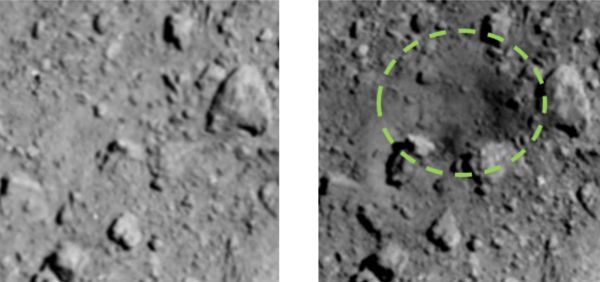
JAXA, The University of Tokyo, Kochi University, Rikkyo University, Nagoya University, Chiba Institute of Technology, Meiji University, The University of Aizu, AIST
Successful Operation of Asteroid Explorer Hayabusa2's SCI (Press Release - April 25)
Japan Aerospace Exploration Agency (JAXA) separated the SCI (Small Carry-on Impactor), which had been onboard the asteroid explorer Hayabusa2, on April 5, 2019, for deployment to Ryugu, and then put the SCI into operation.
As a result of checking the images captured by the Optical Navigation Camera - Telescopic (ONC-T) onboard the asteroid explorer Hayabusa2, we have concluded that a crater was created by the SCI.
Hayabusa2 is operating normally.
Source: Japan Aerospace Exploration Agency
****
This video shows the descent of the SCI (Small Carry-on Impactor) made from images captured at 2 second intervals just after separation from Hayabusa2 by the onboard TIR (Thermal Infrared Camera). In the background, you can see the surface of Ryugu 500m away. pic.twitter.com/O5niPDb2XI
— HAYABUSA2@JAXA (@haya2e_jaxa) April 21, 2019

No comments:
Post a Comment